|
by Melanie Brown Here in New England I think we are all feeling the excitement and freshness of spring. Watching our beloved plants come back from their winter hibernation brings a sense of hope and renewal among other feelings of joy and wonderment. Usually towards the end of winter my brain starts excitedly brewing up ideas of herbal concoctions and wild harvesting that I want to accomplish during this time of year. With this feeling still in full force I am most certain that as a fellow plant lover you too have your own special plant friends that you are drawn to. Below are the green beings and recipes that I am especially in love with right now and I hope I can pass along something that sparks inspiration and brews something delightful in your life. 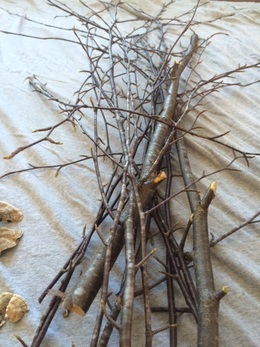 Sweet Birch twigs Sweet Birch twigs Sweet Birch (Betula lenta): Also known as black birch, this aromatic tree has an almost identical composition to wintergreen oil, with its distinct and uplifting aroma. In the 19th century it came close to annihilation in the Appalachian Mountains when the locals learned that oil made from the bark and twigs could be sold for cash. Oh humans... Rest assured there is abundance of this lovely tree here in our open woods. To identify I like to use a little scratch and sniff approach on a twig. If it smells like wintergreen then you know you have found sweet birch. I usually harvest one large branch, cut with very sharp tree pruning shears above where the branch meets the trunk. The inner bark is anti-inflammatory, anti-rheumatic, analgesic, cooling, and moisturizing. With those properties in mind sweet birch makes an incredible infused oil for massaging into sore muscles, achy joints and very dry, irritated skin. This may be used as is or you can add essential oils of cardamom, lavender and chamomile to make a really nice final scent. Mineral & vitamin rich vinegar: Spring is the ideal time to start harvesting all of the abundant, nutritive, wild greens that grace us with their presence everywhere we walk. My favorite combination includes apple cider vinegar, dandelion, stinging nettle tops, and chickweed. I get really excited about vinegars because they provide daily nutrition and health benefits that aren’t available through tinctures or teas. Use as a dressing on wild salads, or even diluted with a little water and honey to taste as a pick-me-up drink. Flower infused honey: We certainly don’t need to go into detail of the amazing medicinal qualities of honey. When you add into it your favorite aromatic flowers it just goes beyond a whole new level of pleasure. I prefer to purchase local and raw wildflower honey -- if you know a beekeeper even better. Cherry blossoms, lilacs, linden flowers, meadowsweet, hawthorn flowers, and violets are some of my favorite additions. I don’t find it necessary (or enjoyable) to strain the flowers from the finished infused honey. If fresh flowers are unavailable dried can be substituted. Plant infused moisturizing body butter: Perhaps you have jars of plant infused oils sitting on your apothecary shelves just waiting to be incorporated into an all-natural body care recipe. Summer is fast approaching and having a jar of melty skin butter to keep your skin happy and glowing just feels right. I also love knowing that the plants are being rubbed into my body on a daily basis -- there’s something magical about that. Creating your own body butter is also where you get to be really creative and tailor it to your skin type. Oils of olive, sweet almond, and apricot kernel are all suitable for the base. Calendula, red clover, comfrey leaf, self-heal, violet, elderflowers, burdock root, and rose are all nice options for infused oils. Coconut oil, shea, cocoa, and mango have been my favorite butters to use. To make: use 3 ounces each of two plant butters of your choice, 1 ounce of coconut oil, 3 ounces of infused oil, and a half ounce of beeswax. Combine above ingredients in a double boiler and gently warm until everything is fully incorporated. Remove from heat and allow to cool until consistency starts to harden. At this point take a hand blender and whip until fluffy. Store in glass jars. Spring holds within it the essence of new growth, unlimited possibilities, and a carefree wild spirit. My hope is for us all to embrace this child-like wonderment and frolic through the forest and fields, basket in hand, gleefully and lovingly playing with our plant friends.  Melanie Brown is a native New Englander who always had an early connection to nature and the outdoors. Together with her four year old son she gathers the ingredients to make small batch plant based body care products which you can find at her herbal apothecary, FIR&ELM. She is a graduate of Boston School of Herbal Studies and currently apprenticing with Margi Flint of Earthsong Herbals. Her passion is to share and spread the message of community herbalism that lies right outside in our own backyards. by Jenny Hauf I am lucky enough to have the pleasure of collaborating with my dear friend Steph Zabel, the founder of Herbstalk. This past weekend we got together to teach a class called “Waking Up to Spring with Herbs,” in which we discussed how to use, grow, and forage the herbs that support and nurture us as we transition from the black and white months of winter into the dawning deliciousness of spring. 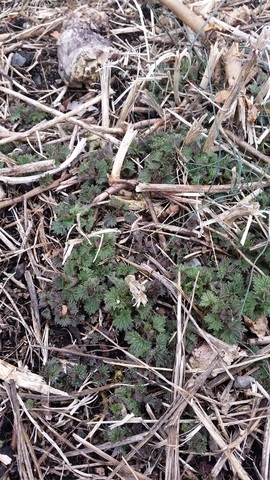 Wild Nettles (Urtica dioica) Wild Nettles (Urtica dioica) Because we always like to have fresh herbs to pass around to our students I headed out to hunt for one of my favorite plant allies, stinging nettle, which we would be discussing in our class. In a trusty nook of Jamaica Plain I walking on a raised path amongst cattails in the lightly flurrying morning, traveling with my eyes to the earth. The shed raiment of autumn was everywhere, crisp and ashy, ready for green growth to cover it and spring rains to hasten its return to mud. As I searched for the tiny first leaves of Urtica dioica—deep green, laced with acid, and tinged purple-red—I discovered other things. There were the crocuses, closed from the cold, but still stalwart and sweet. Long pearls of snowdrop buds dangled in delicate drifts. I also found a single squill blossom, ragged but deeply blue and alive. Bramble leapt over and sidled the path, catching on my skirt and grabbing at my bare knees. Beyond the bramble rose cattails, some still fuzzy with the seed heads they had grown months before, swaying around me. Beyond the marsh were witch hazels, their spidery flowers egg yolk yellow, and a tremendous grandmother of a silver maple with branches tipped in a burgundy haze. Snowflakes occasionally laced through the branches, stalks, and stems as I continued searching, and eventually I stumbled upon my prize: a tiny patch of nettles in miniature, their infant leaves unfanning and little stingers shimmering. Gratefully I snipped a few and laid them in a paper bag. Overhead and throughout the marsh the red-winged blackbirds sang, and I headed home with a handful of brand new life in my arms.  After creating the medicinal herb program at Allandale Farm, Jenny is excited to be embarking on the second season of her own herb farm, Muddy River Herbals. She is thrilled to be offering high quality, sustainably grown herbs to the people of eastern Massachusetts. For more information please visit her website or contact Jenny directly at muddyriverherbals (at) gmail (dot) com for ordering inquiries and herb availability. Muddy River's herbal CSA is currently accepting new members so please visit the website for details. by Melanie Brown
A wealth of folklore, magic, and superstition is attached to this shrub-like tree, often described as a “complete medicine chest,” because of its extensive healing abilities on a wide variety of ailments. The most used species is Sambucus nigra, which grows throughout North America, Europe and many other parts of the world. Its history of medicinal use includes the entire plant in different preparations and dosages, such as the fresh leaf tincture as a reliable nervine. Today most commonly used are the fragrant white flowers that bloom in the spring and the ripe purple-black berries in the fall. The entire plant has shown to possess both anti-viral and anti-bacterial properties while also being a moderate immune system stimulant. 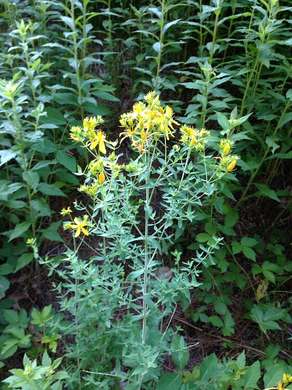 by Patrice Green As I write this, it's the day after the Summer Solstice, and a few days before Saint John's Eve/Day. We are in the midst of midsummer herbal magic! One of the most prolific plants at this time of year is the mysterious Saint John's Wort, Hypericum perforatum. I say mysterious because Saint John's Wort will suddenly appear in an area, stay for one or a few seasons, then will disappear only to re-appear in another location where it is most needed. This plant has a rich history of being used medicinally from Ancient Greece to the Crusades. Used to treat a variety of ailments including pain and bruises as well as mood swings, bed-wetting, and emotional issues, Saint Joh's Wort's Latin name is derived from the tiny perforations naturally occurring in the leaves (perforatum). The other half of its name symbolizes the sun, hypericum - named for Hyperion, the Greek Titan who fathered the Sun, Moon and Dawn. A sprig of Saint John's Wort over the door was traditionally thought to protect against evil spirits. Traditionally this plant was harvested on the morning of the Summer Solstice or the morning of Saint John's Day (June 24th), when the plant and its flowers were at their peak. It is always best to harvest this plant after a series of hot days for increased potency. by Jennie Oceane Edgar Spring brings lovely scented flowers, lime green leaves, and the seasonal migration of birds that left the cold Northeast for their winter homes down South. Spring is also a time when we can step outside of our winter dens with our gathering baskets and walk through the meadows, along the forest’s edge, and even in to the woods to find fresh, abundant, and nourishing food. And for many food foragers, the beloved fiddlehead is a coveted delicacy. Fiddleheads are easily recognizable by their tightly curled tendril tops. They are delicate, elegant, and radiate a sweet, gentle, and peaceful energy. To admire a fiddlehead is to be held in awe of its energy, it’s burgeoning potential to sprout out of the long frozen earth and slowly, slowly unfurl itself to the world. That is, if a delighted forager doesn’t harvest the tops, first. This is why ethical and sustainable wildcrafting is so important – when harvesting fiddleheads, only take about 3 or 4 tops before moving on to the next patch. I never harvest more than 50% of a plant, and this practice ensures the plant will have ample ability to proliferate throughout the future seasons. Furthermore, harvesting living plants is also an exercise in gratitude – giving thanks is a wonderful way to build a relationship to the plant spirit realm, as well as a connection to the earth and ultimately, to ourselves. Together, let’s remember to be thankful for and mindful of the abundant food the wilderness offers us, now when the desolate winter is still a recent memory, as well as in each moment, always. Unfortunately, opinions differ in regard to the safety of consuming certain varieties of ferns. It is difficult to discern which ferns are likely to make one sick, as there are many time-tested instances of people eating fiddleheads from every variety of ferns and faring just fine. Plant identification is very important for any wild food forager, and as a general rule, it is very important to know exactly what plant you’ve encountered and its level of toxicity before you decide to put it into your body. Therefore, I recommend becoming acquainted with the ostrich fern, Matteucia struthiopteris, which is the most well-known and prolific fiddlehead in stores and restaurants. These ferns are easy to identify because of a prominent U-shaped trough running the length of the stem, on the inner side of the stalk. Furthermore, the stalks are smooth, with no fuzz or scales. In mid to late spring, harvest ostrich fern fiddleheads when they are 8 to 20 inches tall. Ostrich ferns will grow to be 3 to 6 feet tall, so the size of the plant is less important than the quality of the top, which should be tenderly firm and bright green, while the leaves of the frond remain unfurled. Simply snap the tops off of the stalk with your fingers. Although the fiddlehead is the coveted portion of the plant, the stalk itself is a juicy, refreshing, and nutritious food, and can be prepared alongside the fiddleheads for a scrumptious meal. And fiddleheads are a great food for the entire family because they are very nutritious, with high levels of vitamins A and C, as well as omega 3 and 6 fatty acids. This means that fiddleheads are a source of antioxidants. They also reduce inflammation and help the body fight the cold and flu. Fiddleheads contain minerals and electrolytes, especially potassium, iron, manganese, and copper. Furthermore, they are a wonderful source of fiber. While these ferns can be eaten raw, it is recommended that you don’t eat them uncooked in large quantities. Fortunately, there are many wonderful ways to enjoy fiddleheads. When I harvest fiddleheads with the intention of cooking them that night, I love to sauté them in garlic for a simple accompaniment to almost any meal. Since fiddleheads are only available for a short time, sometimes it’s nice to preserve and store them so they can be enjoyed months later. I’ve come to love pickled fiddleheads, and I look forward to exploring many different recipes. Let me know how you foraged and fixed your fiddleheads, and many thanks for reading my musings about our beloved fiddlehead, an ephemeral, nourishing food source that grows close to our homes, and close to our hearts.  Jennie Oceane Edgar is the founder of Wildflower Revolution, a spiritual and educational resource that provides herbal products, services, and classes for all women who seek a conscious relationship with their fertility, sexuality, pregnancy, and overall reproductive well-being. Jennie is a doula, childbirth educator, community herbalist, and Masters candidate at Harvard Divinity School, where she studies earth-centered religions and their healing practices. Submitted by Felix Lufkin. White pine, Pinus strobus, is a tall evergreen tree native to the American north-east. It is easy to identify with its dark black / brown, deeply and widely furrowed bark, its straight trunk and upright aiming branches. White pine, like many other pines in the area, offers a number of different edible and medicinal uses. Since it is accessible year round, it’s a great friend of ours in the winter – when wild foods are more difficult to come by. White pine is a fast growing tree if given the opportunity. It often germinates and grows in large, uniform stands after fires clear patches in a forest. Most pines in the north east have been cut since European contact, though some old growth beings remain – while not as tall, they are the east coast’s version of redwoods, along with American chestnut – growing to at least 150 feet in height and 6 in diameter. How to ID white pine: Bark: White pine bark is dark black with a sort of frosted gray hue. It has wide ridges and deepish groves. It’s not scaly, or shaggy. The bark of the younger branches is quite smooth, with a greenish black color. Cones: White pine’s female cones are the familiar pine cones of the north-east, roughly the size and shape of medium cucumbers, and dark brown. The male cones are small, like small pickled gherkins – smaller than a baby carrot, and more dense. They are both less scaly than spruce cones, and much bigger than hemlock cones, which are just the size of grapes. Needles: White pine needles are in clusters of 5 and are about as long as a playing card. Just think of the five letters in W-H-I-T-E. Red pine needles, in contrast, are in bunches of 2, thicker, and as long as hot dog. Pitch pine needles are in bunches of three and can protrude from the trunk itself. Appearance: White pine has a distinctive, stately appearance, especially when viewed at a distance. It’s branches aim out and slightly upward, like a person with spread arms, lifted up and soaking in the sun. It’s easy to ID them on a ridge even miles away. Its branches are ‘whorled’ on the stem, meaning, many of them radiate out from a single part of the branch they sprout from – different than alternate oak branches, or opposite – aligned maple branches, for example. Whorled branches are somewhat uncommon. Food / Medicine uses: Edible needles: The needles are tasty, aromatic and sour. While a bit chewy, there’s no harm in nibbling them right of the tree for vitamins and some roughage. The lime-green new needles each spring are very tender, sour, and refreshing. Enjoy them! Otherwise, take a few handfuls of needles per quart of tea. You can boil water, pour over the needles and cover, or, to make a richer, more resiny and carb-rich tea, you can bring the needles and some thin twigs to a boil for a few minutes then let steep in the pot, also covered. They’re loaded with vitamin C and other minerals (4 or more times more than OJ – and what are we doing drinking orange juice in New England?!). They also make an excellent fortified vinegar. Inner bark: The inner bark, peeled like a pale, fibrous wonton wrapper off the outer (smooth and darker) bark, is a great survival food. It is rich in carbs. It will sustain you when other food sources are unavailable, though causes harm to the tree – so just use wind falls or pruned branches only if you need to. You’ll have to stew it to make it tender, but it’s worth the experience. Sap: The sap can be chewed as a refreshing and flavorful gum that freshens the breath. Find a scab on a trunk that is very dry and firm to the touch. If it’s the slightest bit sticky or mushy, it will get stuck all over your mouth. If that happens, just chew a little butter to break it down. Cones: The small male cones and immature female cones can be steamed or boiled as a vegetable when green and pliable. They are resinous, but the female cones do have tiny pine nuts in them. Medicinal uses: The pollen can be gathered and tinctured for ‘upright chi’, for vigor and vim. The soft sap can be used as an antibiotic on wounds and to ‘stitch’ together a ragged wound. The needles are great for winter immune boosting, and can be steamed and inhaled for upper respiratory infections. Practical uses: The pitch can be boiled with fat or beeswax into superglue and is an excellent fire starter. The wood, of course, is used for lumber and to keep us warm. The soft, younger bark can be skinned from branches and folded into baskets or containers which harden, and can be sewn together with flexible pine roots, sealed with pitch, and will be water tight. You can even boil water in them! Permaculture: Korean nut pine can be grafted onto white pine for a fast growing, canopy evergreen nut tree. The normal pine nuts we eat, from pinon or Chinese nut pines, don’t grow at altitudes below 6000′, so this is an interesting new option for forest gardens.  Felix Lufkin teaches nature classes and wild edibles at K-12 schools and works with Help Yourself!, a project that plants public orchards and gardens in the Pioneer Valley. He also offers an on-site butchering service and instruction in central New England with Ape and Ape, Inc. Submitted by Felix Lufkin. Yucca is a perennial herb of the agave family. It is native to the American Southwest and Central America. It can tolerate low temperatures and prefers well drained, sunny, sandy sites. Because it was a staple edible and of its utility, yucca was a very important plant to the human societies who shared its range. For those of us who live in the northeast, it could play a more important role in our lives, if we only got to know it a little better. Yucca has a number of lily-like bladed, fibrous leaves, and a central flower stalk which can grow to 6′ or more. Its flowers are white, sweet smelling, and fruit to green, 3-sectioned pods full of small disk shaped, crinkly and flat black seeds. The fruits dry to a papery brown husk. All of its body parts are exceptionally useful to humans. Yucca root Its taproot, which looks like burdock, but fatter — is brown and smooth. In its native range it grows to a large size and is a prized starchy root veggie. Here in the north, where it grows more slowly, we probably shouldn’t eat its root unless we have a lot of it. The root is rich like a potato, good boiled, fried, or both. The root’s saponins (broken down by slow cooking) can be made into soap or anti-dandruff shampoo. Its leaves can be made into very strong rope. Some varieties, like ‘Adam’s needle’, have a sharp tip which can be peeled down the leaf, yielding a needle with a string already attached. Cut the leaves close to their base with a knife (just try to rip them!). Pound them between non-abrasive smooth rocks or rolling pins, until the green leafy part breaks away showing the paler fibers inside. Rinse this out periodically until you just have the fibers. Now twist as you would milkweed or anything else. You can also weave the split leaves into mats. Here’s a video on how to make cordage out of agave. fire-starting hand drill kit The stalks are one of the best materials for friction fires. Ever wanted to start a fire by rubbing sticks together? It is totally do-able, empowering, and straightforward! Yucca will be the easiest plant to try with. The stalks are green and flexible. When they dry to a brownish grey, cut or crack them off at the bottom. Cut as long of a straight piece as you can, and cut the lower, thicker end straight across. Cut off any side twigs that are sticking off and try to smoothen it up a bit as you’ll be rubbing this between your hands. This stalk can be used for a hand drill – try to get one as least as long as you arm. Shorter, hotdog sized stalks are good for bow-drill spindles, and once those get short, you can use the plugs for pump drills. Since yucca coals ignite at ~400 degrees lower than other woods they are much more generous for friction fires!Here’s a video about how to do this. The flower is an edible vegetable, though bitter to some. It can be blended into soapy water for cleaning or shampoo. The fruits can be peeled and baked for a vegetable. The seeds, gathered from the fruits, were once soaked, sprouted, and cooked as protein rich gruel by natives. We can do this too. Yucca is a great perennial, multi-function nectary addition to a garden, and is commonly planted in parks, graveyards and lawns. It slowly spreads. Because of its deep root, yucca can be hard to transplant unless you get deep under it with a spade. Keep your eyes peeled for it, and see if you can get to know it better by trying these skills. References: Plants for a Future database Wikipedia.com: Yucca angustifolium  Felix Lufkin teaches nature class and wild edibles at K-12 schools, and is working to plant orchards and gardens in public places in the Pioneer Valley. He also offers an on-site butchering service and instruction in central New England. Submitted by Felix Lufkin. Milkweed’s names in other European languages – ‘silk weed’ in German, ‘little cotton’ in Spanish, and ‘wadding herb’ in French – reveal the utility this plant once had to settlers. Her fibrous outer bark can be hand-twisted into a very strong string known as cordage. This can be doubled up into virtually unbreakable rope. Gathering and preparing cordage is easy – each stalk can make a foot or two of yarn-thick, 50+ lb.-test string. Two-ply milkweed cord can easily hold hundreds of pounds – a friend of mine once towed his truck with pinkie-thick cordage. Considering the sweat shop origins of the string we use daily, couldn’t we stand to take our relationship with local fiber sources more seriously? Milkweed fiber cordage If you’re a visual learner, check out this or a number of other videos on Youtube: Making cordage video on youtube with Chad Clifford. Gathering stalks: For cordage, harvest the dead, black milkweed stalks in the fall on a dry day after their fruits have ripened and the seeds are drifting away. Don’t wait until the winter as the weather will break down the fibers over time. Shake the seed fluff while harvesting to help spread them. If the stalks are damp, dry them before working. Tie unprocessed stalks together to store indefinitely. Milkweed seeds Processing stalks: To remove the fibers from the stalks, crack each stalk between thumb and fingers all the way along their length so the stalk can be split lengthwise, into two or more parts, using a finger. You’ll see the black, fibrous, papery outer skin, and the hard, pale, brittle inner bark. If we try to peel the fibers in strips from the inner bark, they will break into small lengths. The best way separate them is to crack the stalk, core side up, along its whole length in inch long increments with your fingers. Carefully peel each chunk of inner core out, piece by piece, yielding as long strips of fiber as possible. Processing fiber: Do as many stalks as you’d like, then gather all the fibers together and roll them in a ball back and forth (like clay) between your hands to remove the papery skin, which will flake off. This makes the cordage stronger. This fiber ball is great in tinder bundles for igniting coals. Tease the ball apart into a yarn-like length of uniform thickness, half as thick and twice as long you’d like the cordage to be – from thread sized to shoelace size. Don’t make it longer than two feet at a time or it will tangle. Roll this yarn between your hands the way you’d make a clay snake, until it’s contiguous and uniformly thick. Move a bit here and there if need be. Preparing cordage: Find the midpoint of the snake, and go a few inches to one side. Twist this between your fingers until it gets tight enough so it relaxes to a “support our troops” folded ribbon if you move your fingers together slightly. Twist the loop tight and pinch it with your non-dominant hand. Hold the string so its two halves aim outwards towards your other hand, at right angles to each other like the arms of the letter K – with a top one and a bottom one. Twisting the cordage – in three easy steps:
When you want to end, tie a knot. Keep in mind you will end up with cordage half as long as your original fibers. By doing this technique, the cordage comes out 20 times stronger than the original fibers. Doubling the cordage up (2-ply) and flipping the directions so as not to undo the original twists, will make it 400x as strong, then 8000x, and so on. You can use a lighter to quickly burn off the small fuzzy hairs if the cordage comes out ragged.  Felix Lufkin teaches nature class and wild edibles at K-12 schools, and is working to plant orchards and gardens in public places in the Pioneer Valley. He also offers an on-site butchering service and instruction in central New England. Submitted by Felix Lufkin Milkweed in flower Milkweed (Asclepias spp.) is a great wildflower to make friends with – offering a number of delightful, tasty and nutritious foods at many times of the year. She is a well-kept secret and it’s time more people got to know her better. An early succession plant, milkweed seeds sail with the wind to new areas where landslides, fires, beavers, humans, or insects have recently killed an area of late succession forest. They provide habitat and food for many insects like bees, butterflies and spiders, as well as their predators. Many pollinators enjoy milkweed’s sweet nectar, and her leaves are the sole source of food for Monarch butterfly children (who make their own poison, not by concentrating milkweed’s sap, which is not poisonous on its own). Milkweed stalks Milkweed is a perennial herb growing 4-6 feet high. Each year her stalks poke out of the ground in the spring – smooth skinned with opposite, simple, ovoid leaves with smooth edges and reddish veins. Her sap is bright white, containing sticky latex, recognizable in spring from the wound of a gently torn leaf. Flower buds appear in May as clusters of small pale green buds, maturing to large, plum sized clusters, pink to purple in color, each the size of a wild blueberry and looking like a small origami package. They open into firm and neat, white and pink, 5-petaled flowers resembling gummy starfish slightly smaller than M&Ms with a delightful, sweet jasmine fragrance. Harvested buds Once pollinated the flowers become tiny, pale green, gherkin-like fruits, growing in size to fat okra pods in August. Spiny and soft, they are filled with soft white unripe seeds, like spaghetti squash. The pods ripen later in the fall, getting tougher and when open reveal a multitude of fruits folded together – each a small tuft of silk with a brown and black seed attached looking like a flattened tick. As the pods die, the seeds drift out and can be blown great distances by the wind. After settling, the seeds drops off the silk, spending winter under the dead grass and hatching in the spring. Thus, the plant’s body spreads across the Earth. By November the above ground portion dies, drying to a pale black with grey and white streaks, bare of leaves, and stands as a skeleton stalk for a while before falling down to the earth again. Mature milkweed pods Most field guides warn about milkweed’s bitter taste and poisonous constituents. Sam Thayer, in ‘A Forager’s Harvest’ , clarifies this as a case of mistaken identity where foraging hero Euell Gibbons gathered a ‘mess’ of dogbane, and even after many changes of boiling water, pronounced it unpalatable. Since then, other authors have perpetuated this misconception. Thanks to Thayer, folks are rediscovering milkweed as a delicious vegetable as tender and tasty as spinach – requiring no special processing or boiling to remove bitterness (of which there is none), or toxicity (of which there is none). Comparing milkweed to its toxic cousin dogbane is easy. Dogbane’s central stalk branches into several sub stalks, where milkweed’s is single and straight. Dogbane’s stalks are thinner like pencils and are green to reddish brown – while milkweed’s are thicker, like magic markers with green skin in summer and black in the winter. Dogbane’s compound flowers are more dispersed, empty and whitish yellow, while milkweed’s are pink and purple and fairly compact. Dogbane’s fruit is thin and long like vanilla beans, milkweed’s are thick and fat like okra. Dogbane’s leaves are thin, short and bitter where milkweed’s are wide, long, and pleasant tasting. Milkweed flowers Dogbane flowers Milkweed is food – delicious cooked or raw, and safe to eat without any processing.
Milkweed, Part 2: String & Rope will be posted next week…  Felix Lufkin teaches nature class and wild edibles at K-12 schools, and is working to plant orchards and gardens in public places in the Pioneer Valley. He also offers an on-site butchering service and instruction in central New England. |
Archives
November 2023
Categories
All
|
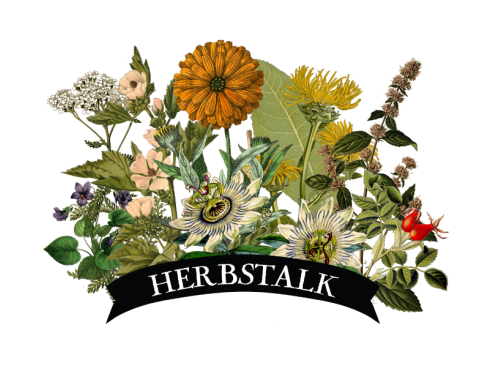
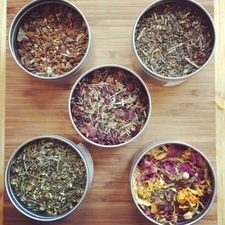
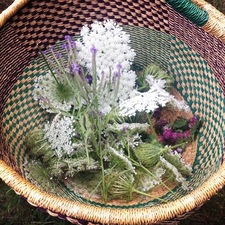
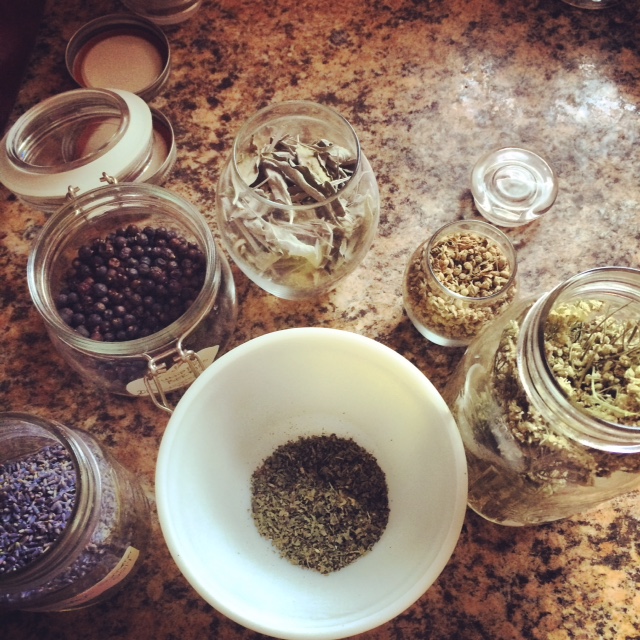


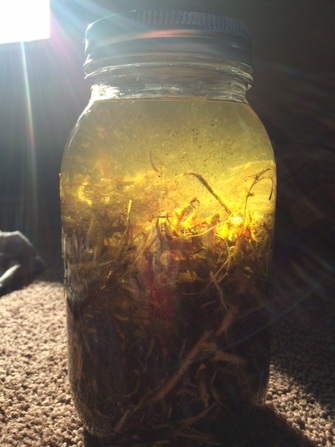
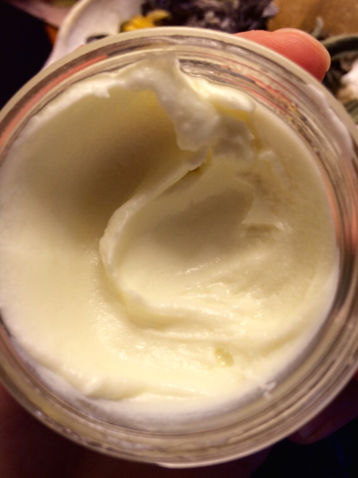
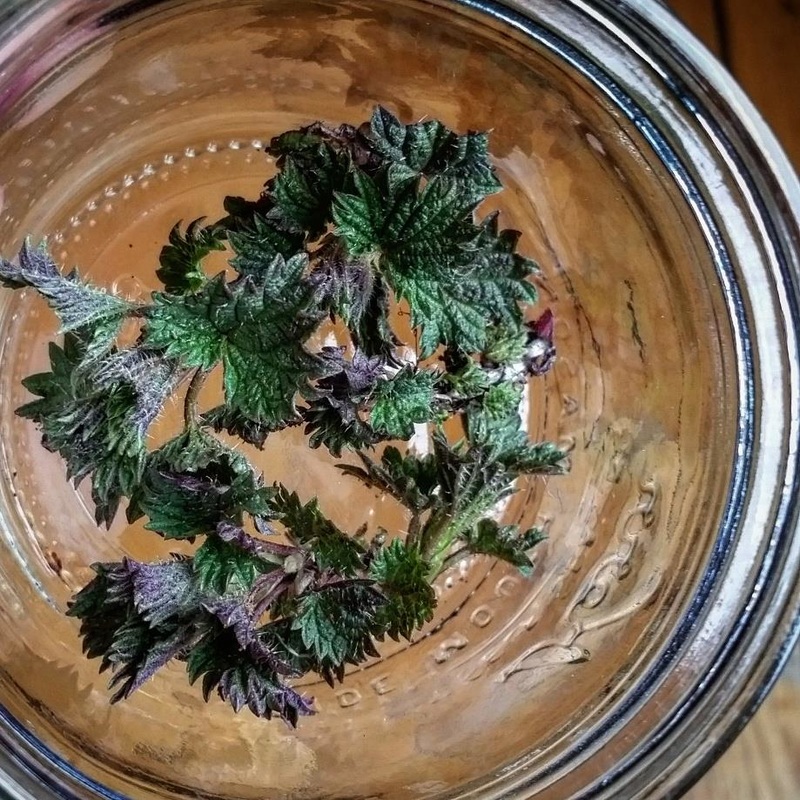
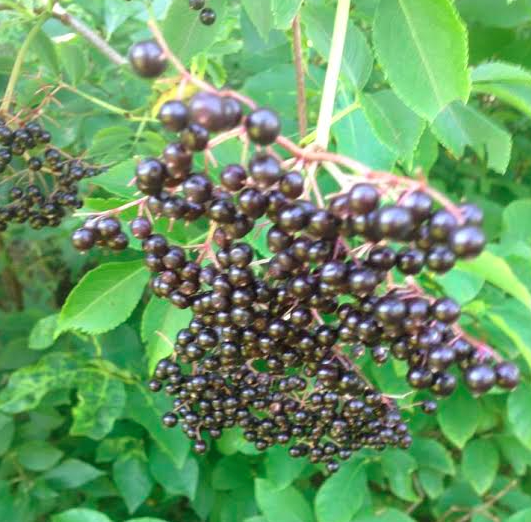

 RSS Feed
RSS Feed